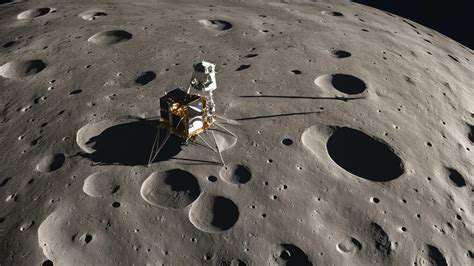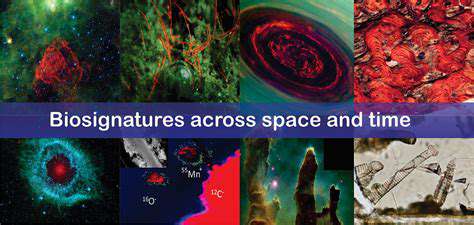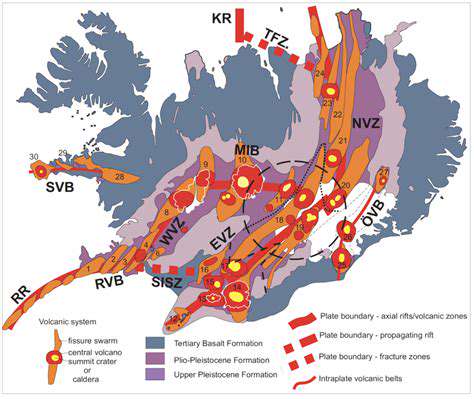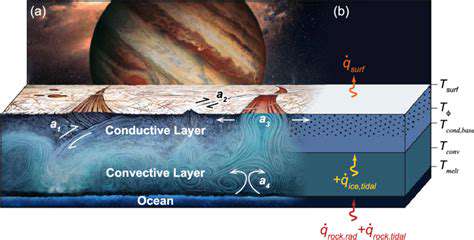
Europa's Enigmatic Ice
Europa, one of Jupiter's four Galilean moons, captivates scientists with its icy surface. This seemingly simple shell, a world of frozen water, likely conceals a vast, potentially habitable ocean beneath. Understanding this icy shell is crucial to determining whether life could exist within the hidden ocean. The unique composition and structure of this shell hold the key to unlocking the secrets of this intriguing moon.
The thickness of Europa's ice shell is still a subject of ongoing research and debate. Scientists are employing a variety of techniques, from analyzing the surface features to studying the moon's gravitational interactions, to piece together a more complete picture. These efforts are crucial for understanding the stability and dynamics of the icy shell and its potential role in the moon's overall evolution.
Evidence of a Liquid Ocean
Observations from space-based telescopes and spacecraft, such as NASA's Galileo mission, have provided compelling evidence suggesting a subsurface ocean. These observations include subtle variations in Europa's gravitational field and its magnetic field, both indicators of a liquid water layer beneath the ice.
Scientists believe that the tidal forces exerted by Jupiter and its other moons play a significant role in maintaining the liquid ocean. These gravitational interactions cause friction within Europa, generating heat and potentially keeping the ocean in a liquid state, despite the frigid temperatures on the surface.
Further analysis of the data collected from these missions will provide a deeper understanding of the ocean's characteristics, including its salinity, temperature, and potential chemical composition. This information is crucial to assess the potential habitability of the subsurface ocean.
Potential for Life
The existence of a subsurface ocean on Europa raises the exciting possibility of life beyond Earth. The presence of liquid water, along with potentially essential chemical elements and energy sources, creates a compelling environment for the development of life, even in the absence of sunlight. This possibility makes Europa a prime target for future exploration and research.
The presence of hydrothermal vents, similar to those found on Earth, could provide a source of energy for life in the ocean. These vents, formed by the interaction of water and rock, release chemicals that could support chemosynthetic life forms. This potential for chemosynthetic life, independent of sunlight, is one of the most compelling aspects of Europa's potential for habitability.
Investigating Europa's Geological Activity and Potential for Life
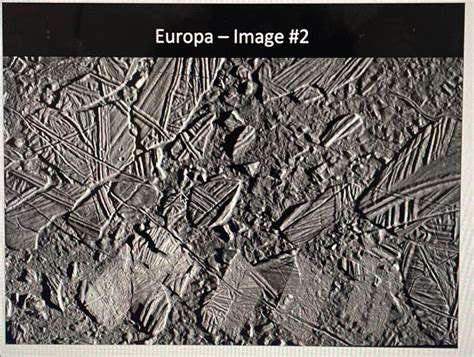
Europa's Potential for Life
Europa, one of Jupiter's four Galilean moons, has captivated scientists for decades due to its potential to harbor life. The presence of a subsurface ocean, hidden beneath a thick icy shell, is a key factor in this potential. This ocean, estimated to be wider than Earth's oceans, could potentially contain more water than all of Earth's surface water combined. This vast amount of liquid water, a crucial ingredient for life as we know it, makes Europa a prime candidate for extraterrestrial life.
The possibility of hydrothermal vents on the ocean floor, similar to those found on Earth, could provide a source of energy for potential life forms. These vents release chemicals from the interior of the moon, which could sustain chemosynthetic organisms. This suggests that Europa might have the necessary conditions for unique and independent ecosystems.
Europa's Icy Shell
Europa's icy shell, estimated to be around 10 to 30 kilometers thick, presents a significant challenge for exploring the ocean beneath. Its thickness makes direct sampling of the ocean incredibly difficult, requiring innovative approaches for exploration. The ice shell's properties, such as its composition and structure, are still being actively researched.
Scientists believe that the ice shell may not be a monolithic structure, but rather a combination of different layers with varying thicknesses and compositions. This complexity adds another layer of intrigue to the exploration efforts, requiring further research to understand its impact on the ocean and any potential life forms within it.
Evidence of Geological Activity
Observations from NASA's Galileo and Hubble Space Telescopes, along with other missions, have provided compelling evidence of ongoing geological activity on Europa. These observations suggest that the moon's interior is still active, leading to potential interactions between the core, mantle, and the subsurface ocean.
Europa's surface displays evidence of tectonic features, such as ridges and lineaments, hinting at internal stresses and the movement of the ice shell. These observations strengthen the argument for a dynamic and potentially habitable environment within Europa's interior.
Europa's Subsurface Ocean
The existence of a global subsurface ocean on Europa is a cornerstone of its scientific interest. This ocean is shielded from the harsh radiation environment of space by the icy shell, potentially creating a stable and relatively protected environment for life to potentially thrive.
The precise composition of this ocean and its potential chemical gradients are crucial questions that remain to be answered. Understanding these factors is essential to evaluating the suitability of Europa's ocean for supporting life as we know it.
Exploring Europa's Habitability
The possibility of life on Europa hinges on the availability of liquid water, energy sources, and essential chemical elements. Europa's subsurface ocean, combined with potential hydrothermal vents and the necessary chemical building blocks, creates a compelling possibility for life to exist.
Further exploration is paramount to understanding the specifics of this potential for life. Missions like the proposed Europa Clipper mission aim to address these critical questions and provide more definitive answers regarding the habitability of Europa.
Future Missions and Exploration
Future missions, like the planned Europa Clipper mission, are crucial for advancing our understanding of Europa's potential for life. These missions will provide detailed data and images to help us better understand the moon's geological processes, the nature of its ocean, and the possibility of life within it.
The data gathered by these missions will significantly advance our knowledge of planetary science and our understanding of the potential for life beyond Earth. Further research will be essential to determine whether Europa's environment truly meets the criteria for life as we know it, or if it harbors entirely new forms of life.
Implications for Astrobiology and Future Exploration
Potential for Life Beyond Earth
The Europa Clipper mission holds immense implications for astrobiology, potentially revolutionizing our understanding of life beyond Earth. The icy shell of Europa, coupled with the suspected subsurface ocean, presents a compelling environment for the potential development of life. Scientists believe that the conditions within this ocean could be analogous to those found on Earth, where life thrives in extreme environments. This possibility has profound implications for the search for extraterrestrial life, prompting us to consider the diversity of environments capable of supporting life and expanding our understanding of the fundamental conditions necessary for its emergence. The mission's data could reveal the presence of organic molecules, which are crucial building blocks for life, providing crucial insights into the potential for biological processes within Europa's ocean.
Europa's subsurface ocean is a tantalizing prospect for astrobiologists. If life exists there, it could be fundamentally different from life on Earth, potentially highlighting the vast diversity of biological systems possible in the universe. The Europa Clipper is designed to characterize the composition of the ocean, including the presence of salts, water, and potential biosignatures. This data will not only help us understand the potential for life on Europa but also inform our strategies for future missions and the search for life in other planetary systems, potentially providing clues to understanding the prevalence of life in the universe.
Understanding Europa's Geological History
The Europa Clipper mission promises to shed light on Europa's geological history, revealing insights into the processes that shaped this intriguing moon. By analyzing the surface features, including the presence of ridges, cracks, and potential plumes of water vapor erupting from the icy shell, scientists can piece together a timeline of Europa's evolution. This knowledge will help us understand the interplay between the icy shell and the subsurface ocean, and how these interactions might have influenced the potential for life within the ocean. This historical context is crucial for understanding the current state of Europa and the possibility of life persisting or evolving there.
Studying the geological history of Europa is vital for assessing the habitability of the moon. The mission's detailed mapping of Europa's surface features will allow scientists to identify areas of potential interaction between the subsurface ocean and the surface, potentially revealing clues about the exchange of materials and energy that could be critical for sustaining life. The insights gained will help refine our understanding of planetary evolution and the formation of habitable environments, potentially offering valuable lessons for the search for life on other icy moons and planets throughout the solar system.
Future Exploration Strategies
The success of the Europa Clipper mission will significantly influence future exploration strategies for Europa. The collected data will help to prioritize future missions, guiding the selection of landing sites and the development of technologies for exploration. For example, the presence of plumes, if confirmed, could dramatically change the approach to sampling the subsurface ocean, potentially allowing for direct access to the ocean without the need to land on the surface. The mission's findings will likely lead to the development of new technologies for in-situ analysis and robotic exploration, significantly advancing our capabilities for space exploration. These potential discoveries could revolutionize our understanding of the potential for life beyond Earth and drive future missions to explore other potentially habitable environments in the solar system.
Beyond Europa, the lessons learned from the Europa Clipper mission could have broader implications for future space exploration. The advanced techniques and technologies developed for this mission could be adapted and applied to other planetary bodies, including Mars and other icy moons. This could lead to the development of more sophisticated instruments and robotic systems capable of exploring diverse environments and searching for signs of life beyond Earth. Ultimately, the Europa Clipper mission holds the potential to inspire a new era of space exploration, driving us to push the boundaries of our understanding and reach for the stars.



